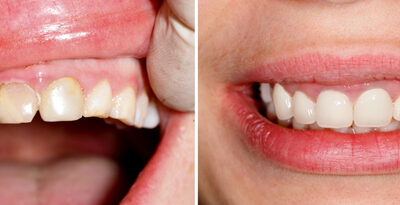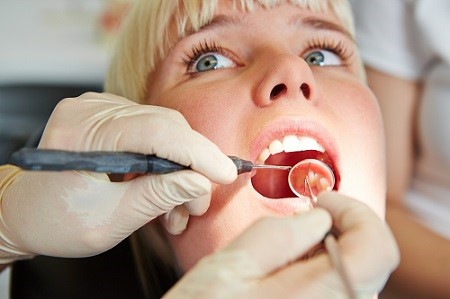
Dental veneers and bonding are two of the cosmetic dentistry procedures used to help improve your teeth and smile. Both of the procedures will hide all of your flaws and imperfections your teeth display, but they are completely different when it comes to how the procedure is done, along with how much they cost and the materials used. Make an appointment with us at our Kennewick dental office to get a consultation.
Veneers
Veneers are the thin pieces of porcelain that cover the front of your teeth; many people compare them to artificial fingernails. The main purpose of veneers is to hide gaps between your teeth and hide your crooked or stained teeth. The procedure is quite easy. The dentist will start by removing some of your tooth enamel. This will allow room for the veneers then the molded image will be sent off to the dental lab. The dental lab is responsible for the construction of the veneers. The veneers are applied right on your teeth with an adhesive material. The entire process can take up to 3 dentists visits.
Pros & Cons of Veneers
Since veneers are custom-made for each individual, it is next to impossible to tell the difference in someone who is wearing veneers and someone who has their natural teeth. On a good note, the veneers will never change color, so you don’t have to worry about coffee stains. The only downfall is veneers are on the expensive side. Other than that, the pros outweigh the cons.
Dental Bonding
Now on the other hand, dental bonding also hides your teeth’s imperfections. However, they are matched to the color of your natural teeth and are normally applied by your dentist without any special tools. It is kind of like putty that is molded and shaped to hide each and every one of your imperfections. However, unlike veneers, it is does not have a translucent look. The ultimate function of dental bonding is to make discolored, short teeth, and chipped teeth look better. Dental bonding is also commonly used to protect the part of the tooth when the root becomes exposed.
Pros & Cons of Dental Bonding
Dental bonding is actually faster, easier, and cheaper than getting veneers. The entire procedure is done in a single visit. However, the only downfall with dental bonding is that wine and coffee can stain your bonding. Other than that, it is great to fix minor teeth imperfections.
Maintenance
Now to keep your veneers and bonding for years to come you will need to avoid chewing on: pens, your nails, and anything hard. The reason why is the material that is used for these two procedures is not as strong as your natural teeth. If you take good care of your dental bonding you will have them from 2 to 5 years; you can have veneers for at least 15 years or more. If you want to beautify your smile, call us at our Kennewick dental office and schedule an appointment today!
- 10 Things You Need to Know About Invisalign Teen -
- Braces For Adults -
- 5 Questions about Esthetic Veneers, Answered -
- Are Dentures Right For You? -
- Endodontist vs Periodontist, and Prosthodontist: What’s the Difference? -
- The Ideal At-Home Routine for Caring for Your Teeth -
- 5 Signs It’s Time for a Dental Check-Up -
- Five Reasons Why Over-the-Counter Teeth Whiteners Are a Bad Idea -
- Tips to Conquering Dental Anxiety -
- Seven Proven Ways to Fight Halitosis -



